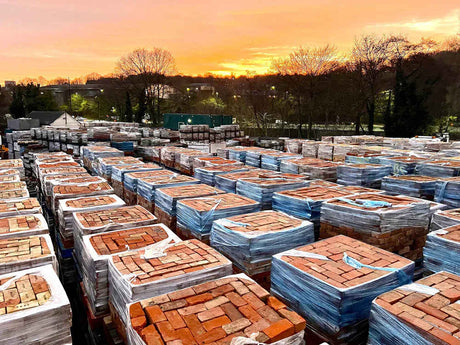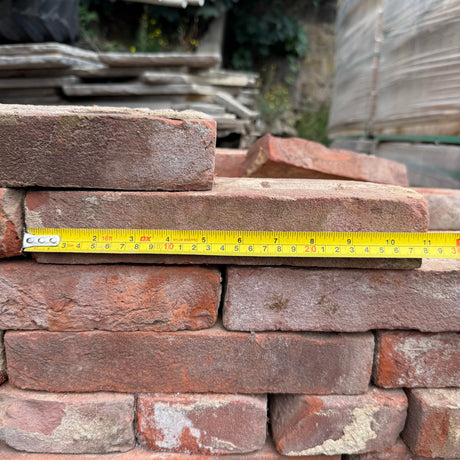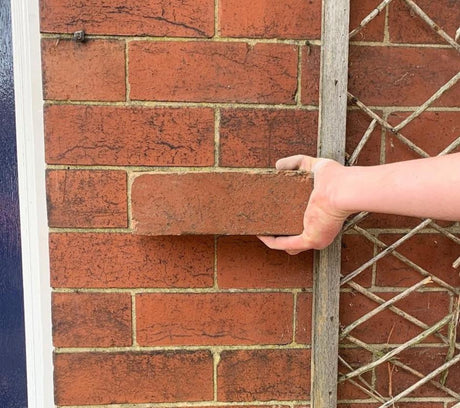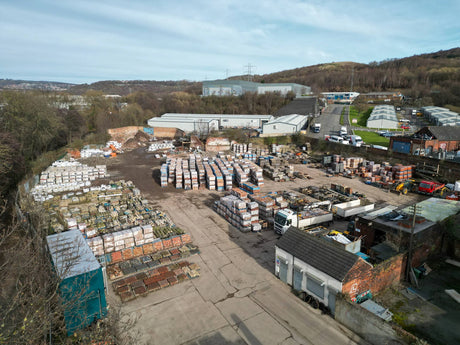Understanding Brick Slips: Definition and Usage
To provide the illusion of actual bricks, they are added to an already-existing surface.
This implies that a masonry wall impression, whether classic or modern, may be simply produced without starting from scratch and using actual bricks.

Brick Slips vs Brick Tiles: Making the Distinction
While 'brick slips' and 'brick tiles' may sometimes be used interchangeably, it's important to know they are not exactly the same. Masonry slips are generally made from real clay bricks, which give them a unique aesthetic and tactile appeal.
They are typically more durable and more closely mimic traditional brickwork.
Real Clay Bricks: A Base for Brick Slips
A real brick slip is, as you might expect, a slip or slice of a real clay brick. It offers the charm and texture of traditional bricks but with the flexibility and ease of installation of a tile.
DESIGN IDEAS FOR BRICK SLIPS
Utilising Brick Slips Externally: Prospects and Challenges
Brick veneers are not only seen inside our homes anymore. They have been effectively used to buildings' exterior surfaces, pushing the limits of applicability for ordinary masonry.
External Brick Slip Cladding
Applying masonry slips externally or using them as external masonry slip cladding, is a revolutionary way to completely transform the look of your house.
This process is completed the same way as it would be done internally, making it a suitable project for DIY enthusiasts.

Durability: The Long-Lasting Nature of External Brick Slips
Durability is a major concern because masonry slips installed outdoors are exposed to the weather.
The Installation Process: How to Apply Brick Slips Externally
Tools and Accessories Needed for Installation
To install brick veneers externally, you will need some standard tools such as a spirit level, a notched trowel, spacers, and a cutting tool. A key material you'll need is adhesive, which helps to fix the slips onto the surface.

Step-by-Step Guide to Installing Brick Slips
While each project might be different, the steps to install
brick slips externally are typically the same.
The surface should be prepared, the slips are then applied using adhesive, and finally, pointing mortar is added to finish the project.
Pointing Mortar: The Essential Ingredient
Its Role in Installation and Maintenance
Filling the spaces between the
brick veneers with pointing mortar gives the wall solidity, weather resistance, and the genuine appearance of a
masonry wall.
Choose wisely since the colours overall effect on the finished wall's look might be substantial.

Feature Walls: A Creative Use of Brick Slips
Enhancing Exposed Brick Aesthetic with Brick Slips
With a diverse range of colours and textures available, you can easily create an
exposed brick feature wall that adds character to any outdoor space.
Why Choose Brick Slips for Your Next Project?
The Benefits of Using Brick Slips Over Traditional Brickwork
Brick slips offer a cheaper, more time-efficient alternative to traditional brickwork.
They deliver the same aesthetic appeal as real bricks but without the intensive labour and cost.
Wide Range of Colours, Textures, and Styles
Brick slips are available in a variety of designs and colours to meet any project, from rustic to modern.
Of course, actual
masonry slips are your best option if you want to replicate the brickwork already in place.
What's the difference? Real Bricks vs Brick Slips
The main difference between real bricks and
brick slips is their thickness and installation method.
While bricks are full-sized and require traditional masonry skills, brick veneers are thinner and can be installed more like tiles.
Seeking Technical Advice for Your Project
It's crucial to get technical guidance, just like with any building job. Advice on the proper installation technique, a workable adhesive, and the proper sort of
masonry slips will prevent you from making expensive mistakes later on, regardless of whether you're doing the project yourself or employing specialists.
Defying boundaries and conventions,
masonry slips have demonstrated their versatility and charm in both interior and exterior applications.
Whether you're revamping your home or working on a commercial project,
masonry slips could offer the aesthetic appeal, durability, and cost-effectiveness you need.
FAQs
-
Can brick slips be used outdoors? Yes, brick slips can be used outdoors, and are often used for external brick slip cladding.
-
What are brick slips made from? Brick slips are typically made from real clay bricks, though there are also those made from concrete and other materials.
-
How are brick slips installed? Masonry slips are installed using adhesive and pointing mortar. The process is similar to tile installation.
-
Are brick slips durable? Yes, brick slips are long-lasting and can withstand various weather conditions, especially when installed properly.
-
What is the difference between real bricks and brick slips? The main difference is the thickness and installation method. While real bricks are full-sized and require traditional masonry skills, masonry slips are thinner and can be installed like tiles.
SHOP BRICK SLIPS












